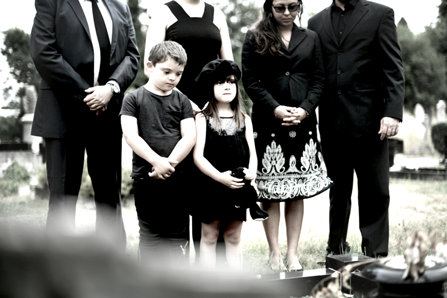Slow-Onset Alcohol Deaths, Overlooked by Media and Activists Alike

While federal and state governments scramble for funding and resources to combat the opioid epidemic, the steady march of alcohol-related deaths continues practically unnoticed. There are, in fact, more alcohol-related deaths than drug overdose deaths, but they occur so slowly that they go almost completely unnoticed.
An alcohol-related death is not practically instantaneous like an opioid death. Instead, it occurs over a period of many years as alcohol poisons a person’s brain and body.
Just what kind of damage is alcohol creating? Alcohol wreaks havoc on a body’s ability to fight infection, maintain a healthy heart, liver and vascular system or ward off the growth of cancer. For long-term drinkers, the following types of health problems are more common:
- High blood pressure
- Stroke
- Liver failure
- Heart disease
- Memory problems
- Alcoholism
- Cancer of the breast, mouth, throat, esophagus, colon, and liver
- Certain types of dementia
- Effects of high-risk behavior such as unprotected sex
- Accidents due to the operation of motor vehicles
- Workplace accidents due to inebriation
It’s much easier for the media or activists to get attention by talking about drug overdose deaths. The cause-effect relationship is very direct and obvious. There’s a clear concentration of a drug like heroin, cocaine or methamphetamine in the person’s body when he or she dies.
It’s harder to make a good newspaper headline about a man who drank heavily most of his adult life and then died from cancer of the esophagus. But the cause-effect relationship between excessive alcohol consumption and a deadly health problem like stroke, heart disease or cancer may be just as definitive as a death resulting from an overdose of heroin.
The American Cancer Society supports this idea when they describe the cause-effect relationship between alcohol and the cancers listed above: “For each of these cancers, the more alcohol you drink, the higher your cancer risk.”
All Drug or Alcohol-Related Deaths Are Tragic

There’s no claim that any of these deaths are any more or less tragic than any others. Both causes of death create orphans and widows. Both leave the entire responsibility for a household and raising children to the surviving spouse. If we fight one of these causes, we should really fight both of them. But that steady march of fatal illnesses resulting from alcohol consumption is almost completely overlooked by the media.
Here’s how the number of deaths from drug overdoses and alcohol-related causes compares.
- Coroners around the country reported 72,000 drug overdose deaths in 2017, up from nearly 64,000 in 2016.
- The Centers for Disease Control and Prevention (CDC) report that there are 88,000 alcohol-related deaths each year.
- The total of lives lost each year to both these causes now totals 160,000.
Yes, There Are Alcohol Overdoses
There are roughly 2,200 alcohol poisoning deaths or alcohol overdoses each year—an estimated 6 people per day. Most of the victims are men 35 to 64 years old.
How much alcohol does it take to overdose? The legal limit for one’s blood alcohol concentration when driving is .08%. For an average-sized man, that means consuming 4 standard-sized alcoholic drinks in one hour (one standard drink = one shot of liquor or one beer).
If a person drinks enough to get their blood alcohol concentration to .3%, their life is in danger. That would mean consuming roughly the equivalent of 16 shots in an hour.
It’s not an unusual occurrence on a 21st birthday when the newly-legal person tries to consume 21 shots in an hour. Fortunately, most people vomit up the alcohol.
An alcohol poisoning death gets more attention because of the shocking nature of the sudden loss and the obvious cause-effect. Meanwhile, 88,000 people per year will lose their lives slowly, perhaps without anyone but their families noticing. It could take an excessive drinker ten or twenty years to die.
When we ignore the number of these slow deaths caused by alcohol, we miss the opportunity to educate people on the harm they are doing to themselves by drinking excessive amounts night after night. By not raising an alarm, we fail to protest the loss of these 88,000 people.
It seems that we are also pretending that other types of alcohol-related damage don’t exist, such as non-fatal illness, domestic violence, and child abuse.
That excessive drinker also lost jobs, damaged businesses, made his spouse’s life difficult, most probably has damaged their children, and created harm in his community by drinking and driving.
Health Risks of Excessive Drinking Start Quickly
The health risks listed above are the risks a person suffers after drinking for years. There are also health risks that show up much sooner. According to the CDC, the short-term risks include:
- Injuries from traffic accidents or falls
- Illnesses such as pneumonia or tuberculosis
- Sexual assault
- Miscarriage and stillbirth
- Changes to the brain that make it harder to think clearly or move in a coordinated way
Who runs the highest risk for alcohol-related illnesses and deaths? As the American Cancer Society notes, the more you drink, the greater your risk. Any person who drinks excessive amounts increases their risk. Any person who can’t control their drinking and so drinks to drunkenness frequently is running a very high risk.
Alcohol Consumption: An Ingrained Part of the American Culture

For many people, alcohol is an accepted and ingrained element at so many different life events like these:
- Drinking champagne at midnight on New Year’s Eve
- Toasting a new bride and groom
- Pairing an expensive wine with dinner
- Relaxing with a few drinks in a bar after work, with friends
- Having a pre-dinner cocktail
- Drinking beer or wine coolers at a picnic
- Getting wasted on a 21st birthday
- Drinking heavily after bad news or a relationship breakup
- Drinking beer during a televised or live sporting event
- Keeping a drink in one’s hand during social events
- Drinking more than usual at holiday parties
Drinking is so accepted as part of our socializing or celebrating that anyone who protests this norm risks ridicule if they speak up.
To those who accept the idea that alcohol makes a good time even better, a protestor is a severe slap in the face, a radical, a Carrie Nation breaking alcohol bottles in the bar with her little hatchet.
In some circles, a person who chooses to refrain from drinking will face direct opposition. A few years ago on Twitter, I noticed this tweet:
“Drinkin buddy says to me ‘You WILL come to the bar with us & get drunk cause ur not a man unless U drink.’
Anyone can drink let’s see u stop!!”
“Drinkin buddy says to me ’You WILL come to the bar with us & get drunk cause ur not a man unless U drink.’ Anyone can drink let’s see u stop!!”
It’s not that a glass of wine with dinner or a celebratory toast is harmful. It’s excessive drinking that is destroying health and killing people.
Alcoholic Beverage Companies and Their Best Customers
It is no secret to the alcoholic beverage companies that their best customers fall into two categories:
- Underage drinkers
- Problem drinkers
Underage drinkers consume 11% of all the alcohol drunk in this country. Ninety percent of this alcohol is consumed during bouts of binge drinking. Underage individuals who drink are more likely to struggle with school, social, legal and physical problems. Statistically, they suffer more sexual assaults and unintended pregnancies. They experience higher levels of alcohol-related auto accidents, suicides and homicide.
Of course, underage drinkers aren’t the only ones harming themselves. Legal-age drinkers also binge-drink. Nearly one-third of American adults drink excessively. This doesn’t mean they are addicted but it does mean they are drinking enough to accumulate harm with every additional drink.
A person who falls into this category continues to drink despite having alcohol-related problems in life, health, relationships, work or school but doesn’t see the need to stop drinking. Just a good conversation or maybe even some “Tough Love” would go a long way here.
According to the Washington Post, the top 10% of American adult drinkers consume an average of 74 drinks per week or more than 10 per day. That is more than enough to damage one’s health and mental clarity, as well as one’s family life, work and community.
Paying attention to the health of America should mean caring for those who can’t control their daily or weekly alcohol consumption just as much as we care for those lost in opioid addiction.
Let’s not forget them as we work to help or friends and neighbors live healthier, longer and more enjoyable lives.


 ®
®